Discover how a bimodal integration strategy can address the major data management challenges facing your organization today.
Get the Report →Feed Dynamics 365 Business Central Data into FineReport
How to set Dynamics 365 Business Central data as a JDBC data source in FineReport.
The CData JDBC Driver for Dynamics 365 Business Central fully implements the JDBC standard and can provide Dynamics 365 Business Central data connectivity to a wide variety of BI, reporting, and ETL tools and custom applications. In this article, we explain how to set Dynamics 365 Business Central data as JDBC data source in FineReport and view Dynamics 365 Business Central data as a table in the Report Designer.
Set Up a JDBC Data Source of Dynamics 365 Business Central Data
Follow the instruction below to set Dynamics 365 Business Central data as a FineReport database connection.
- Copy the cdata.jdbc.d365businesscentral.jar file from the lib folder in the CData JDBC Driver for Dynamics 365 Business Central installation directory to the lib folder of the FineReport installation directory. You will need to copy the cdata.jdbc.d365businesscentral.lic file as well.
- From the Server tab, select Define Data Connection, click to add a new connection, and click JDBC.
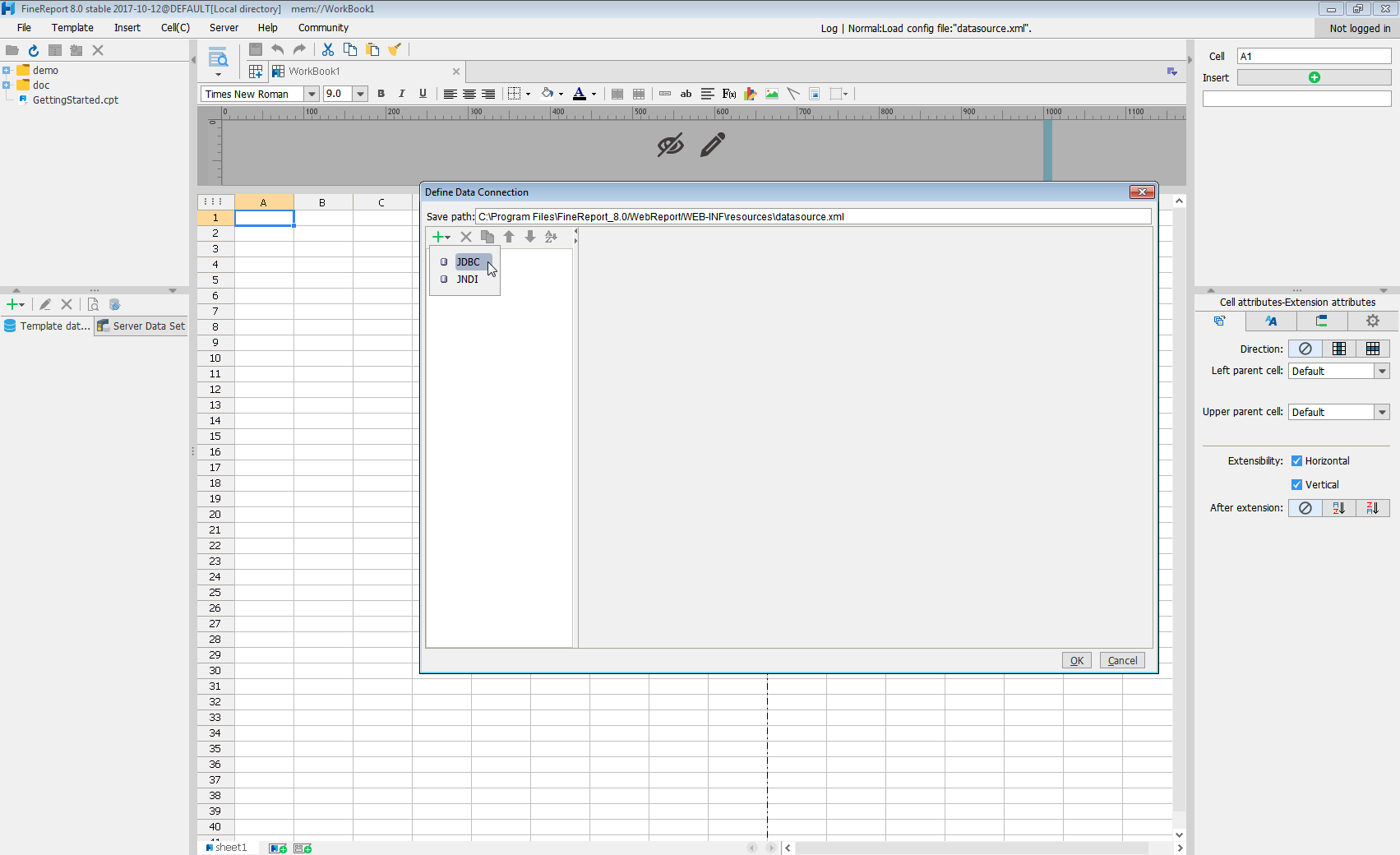
Next we will set up the data connection definition in the window.
- Database: Others
- JDBC Driver: cdata.jdbc.d365businesscentral.D365BusinessCentralDriver
-
URL: A standard JDBC connection string using semicolon-separated connection properties.
To authenticate to Dynamics 365 Business Central, you must provide the User and AccessKey properties.
To obtain the User and AccessKey values, navigate to the Users page in Dynamics 365 Business Central and then click on Edit. The User Name and Web Service Access Key values are what you will enter as the User and AccessKey connection string properties. Note that the User Name is not your email address. It is a shortened user name.
To connect to data, specify OrganizationUrl. If you have multiple companies in your organization, you must also specify the Company to indicate which company you would like to connect to. Company does not need to be specified if you have only one company.
Built-in Connection String Designer
For assistance in constructing the JDBC URL, use the connection string designer built into the Dynamics 365 Business Central JDBC Driver. Either double-click the JAR file or execute the jar file from the command-line.
java -jar cdata.jdbc.d365businesscentral.jarFill in the connection properties and copy the connection string to the clipboard.
![Using the built-in connection string designer to generate a JDBC URL (Salesforce is shown.)]()
When you configure the JDBC URL, you may also want to set the Max Rows connection property. This will limit the number of rows returned, which is especially helpful for improving performance when designing reports and visualizations.
A typical JDBC URL is below:
jdbc:d365businesscentral:OrganizationUrl=https://myaccount.financials.dynamics.com/; - Click Connection pool attributes and set Test before getting connections to No.
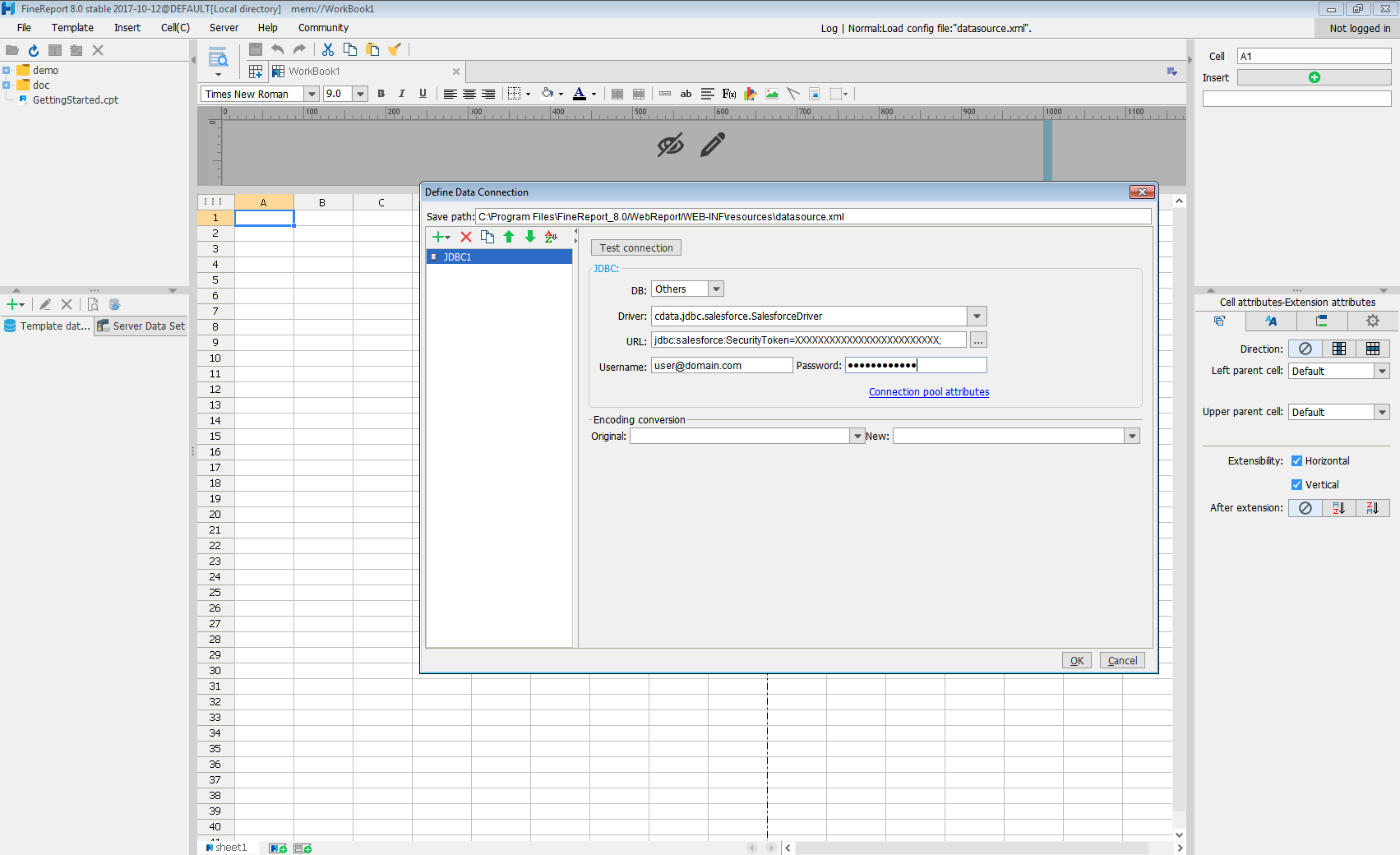
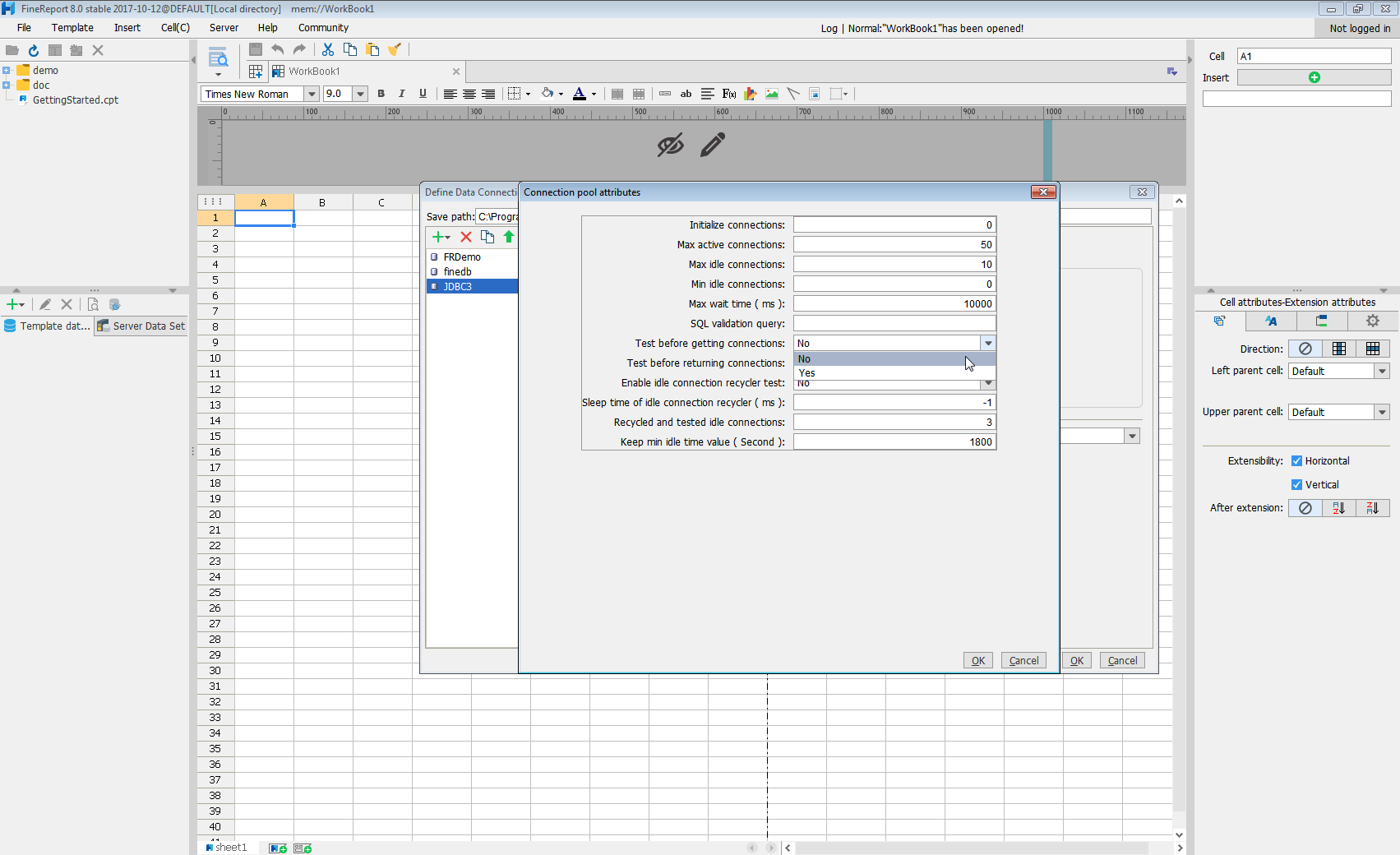
Click Test connection to ensure you have configured the connection properly. With the connection to Dynamics 365 Business Central set up, you can use it as FineReport data source.
Select Dynamics 365 Business Central Data in the Report Designer.
- Click to add a new template data set and select DB query to open the database query window.
- Choose the JDBC connection that you created from the dropdown list.
- The Dynamics 365 Business Central entities will appear as tables on the left pane.
- Write a SELECT statement for the Dynamics 365 Business Central data tables and columns that you want to load.
- Click preview and data is shown as table.
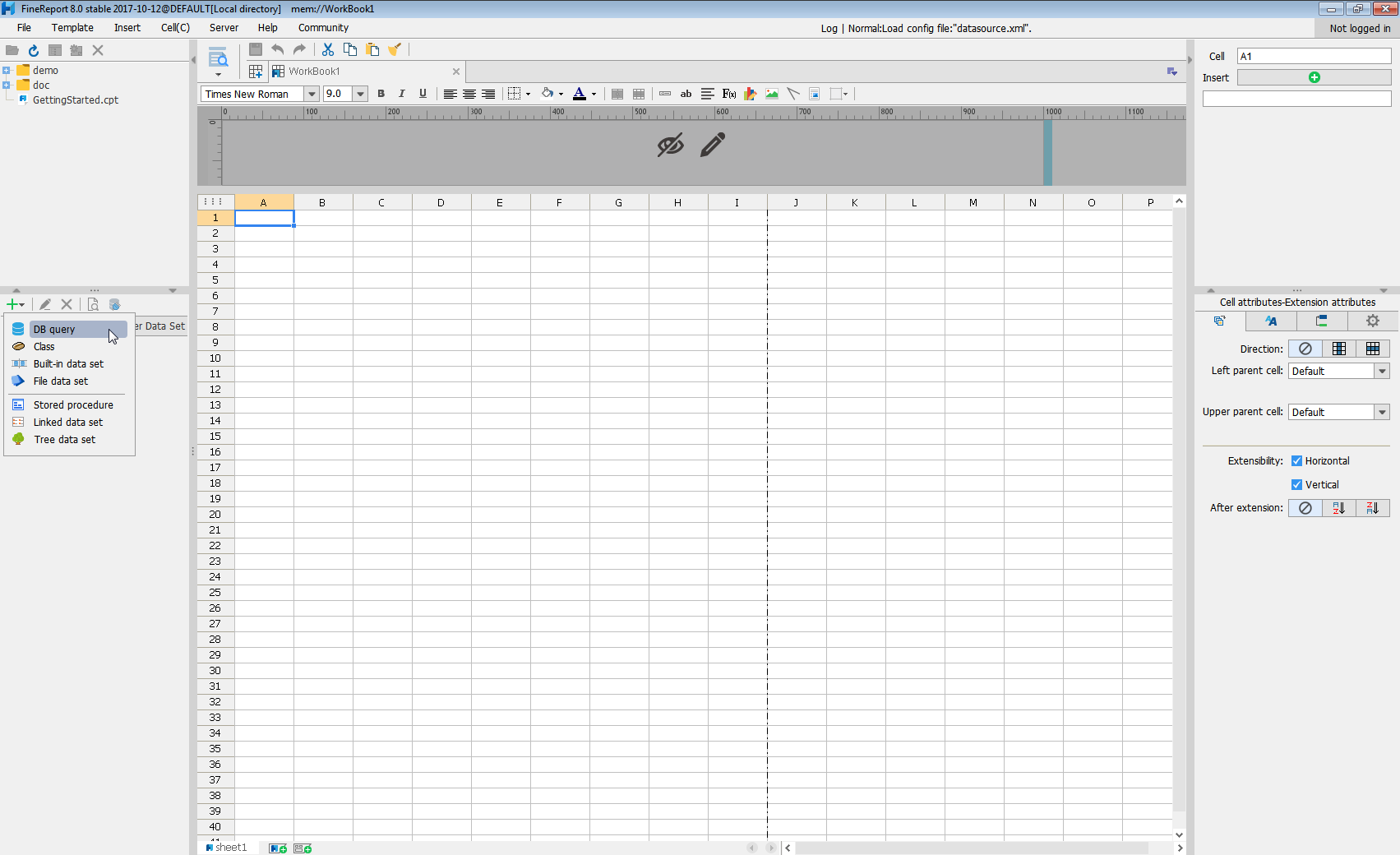
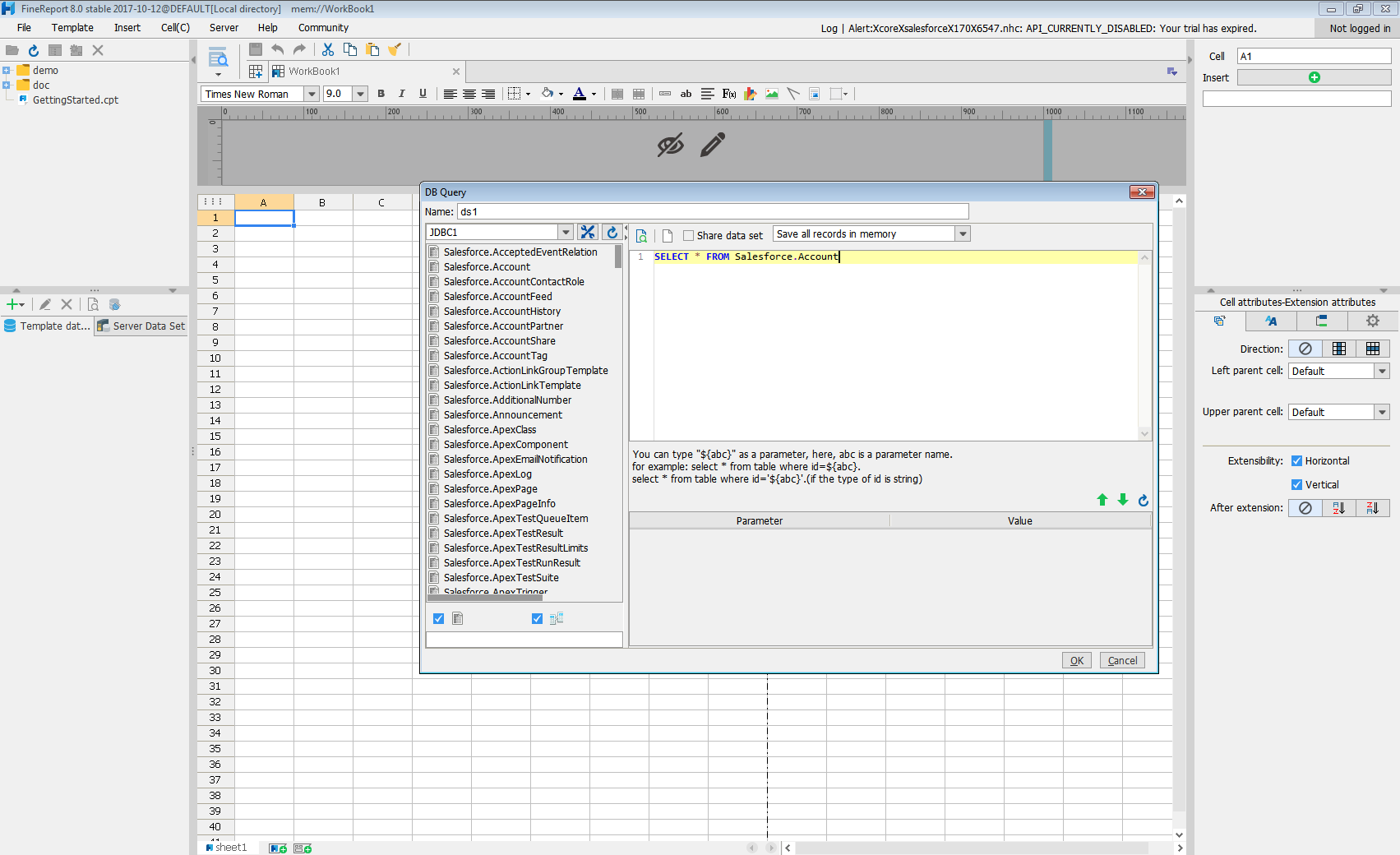
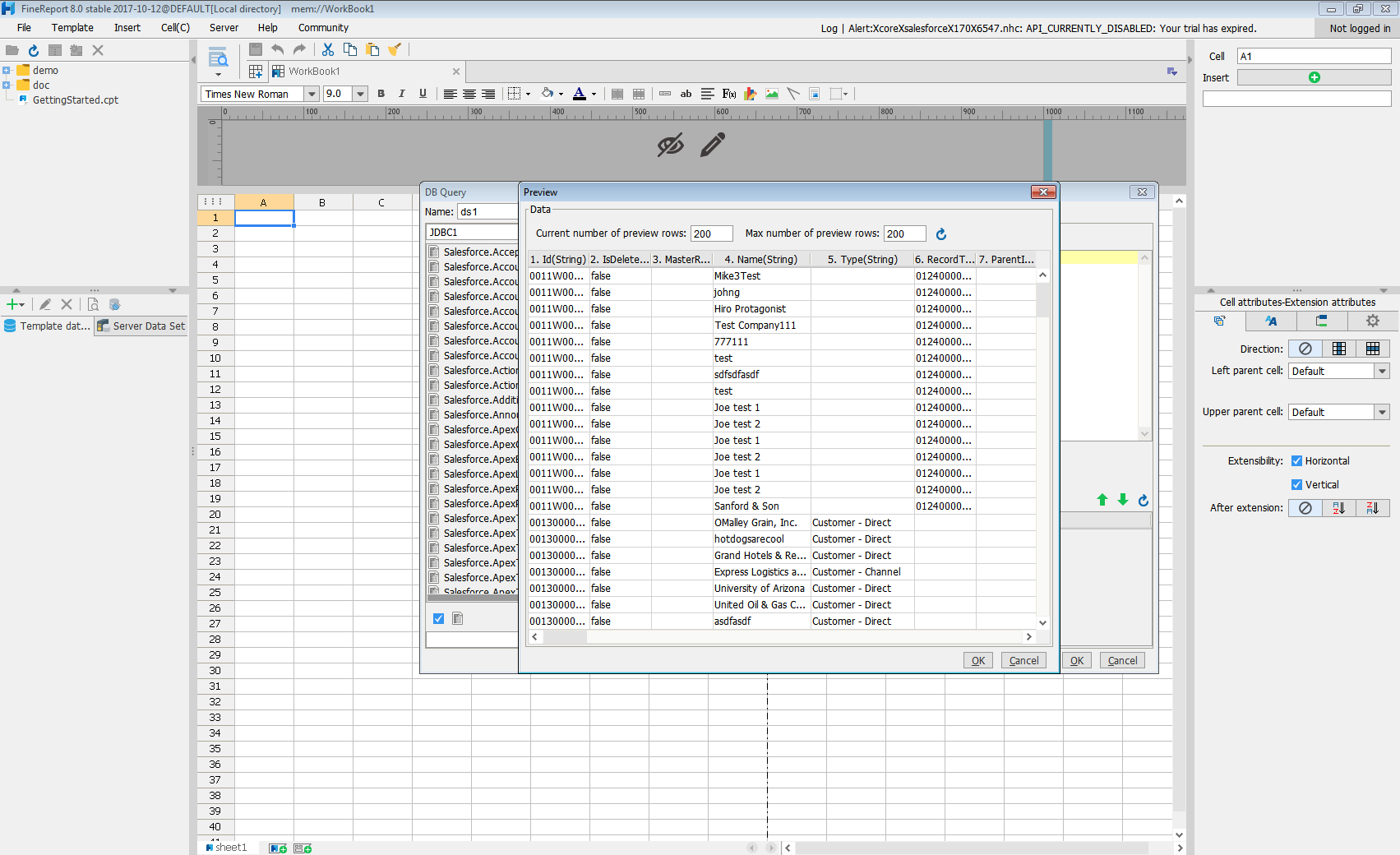
With these simple steps, Dynamics 365 Business Central can be used as a JDBC data source in FineReport.







